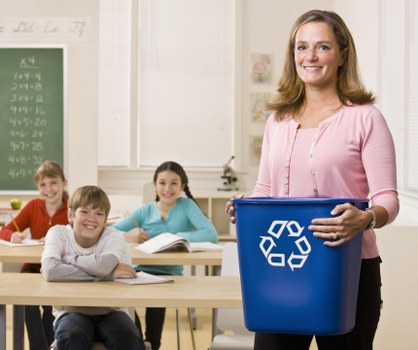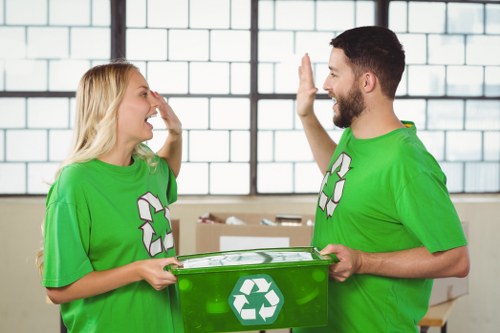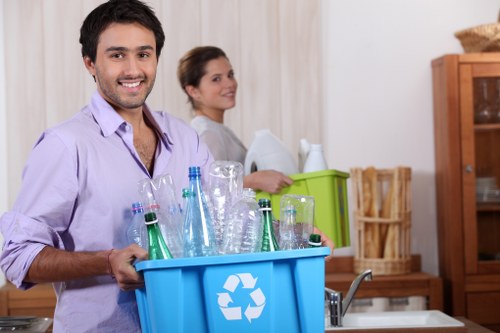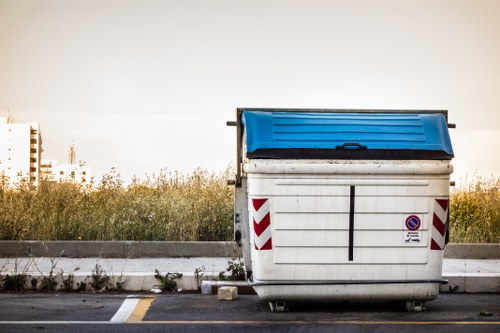Garbage Collection in Rubbish Clearances
Introduction to Modern Garbage Collection

Garbage collection in rubbish clearances has evolved from a rudimentary removal of waste to a sophisticated, strategic process that addresses environmental concerns and urban challenges. In today’s fast-paced world, effective waste management is not only about keeping our surroundings clean but also about safeguarding public health and preserving natural resources. With cities rapidly expanding and consumption increasing, modern cities embrace advanced technologies to streamline trash removal and waste sorting initiatives. The concept of rubbish clearances now includes eco-friendly practices that minimize landfill use and promote recycling. Through a blend of traditional techniques and innovative solutions, local governments and private companies boost efficiency while reducing the ecological footprint. This continuous evolution reflects a global commitment to transforming waste into resources while maintaining sustainability and enhancing overall quality of life.
The journey towards enhanced garbage collection in rubbish clearances began decades ago, when simple collection methods were the norm and community efforts were limited in scope. Today, however, the waste management industry has redefined its priorities by integrating environmentally conscious strategies that emphasize resource recovery and conservation. In many urban centers, state-of-the-art collection vehicles and automated sorting facilities are becoming increasingly common. This new era of waste collection not only helps in reducing greenhouse emissions but also plays a critical role in urban planning and public health. Citizens, government bodies, and industry experts are now actively involved in discussions on improving systems that ensure waste is managed in a safe manner.
One of the major challenges in garbage collection is managing the spectrum of waste types generated daily. From organic refuse to industrial byproducts, each category demands a unique approach for disposal and recycling. The renewed focus on sustainable rubbish clearances has led to methodical breakdowns of waste streams, allowing specific handling techniques for plastics, glass, metals, and hazardous materials. Furthermore, the integration of community education programs has elevated public awareness about responsible waste disposal. As municipalities continue to innovate, the future of trash removal will likely embrace even more automated processes, adapting to both environmental imperatives and ever-growing urban populations.
Understanding Waste Management Strategies

Waste management strategies have become central to modern garbage collection in rubbish clearances, significantly impacting how cities approach sanitation and urban planning. With rapid industrialization and urban growth, local authorities are turning towards integrated waste management systems that merge collection, recycling, and disposal. The implementation of these strategies entails robust planning and community collaboration. Approaches such as scheduled pickups, designated recycling days, and community clean-up campaigns are now widely promoted to maintain healthy urban environments. Through a mix of governmental policies and private sector initiatives, the emphasis on reducing landfill waste and managing toxic materials has reached unprecedented levels.
In addition to traditional collection methods, contemporary strategies leverage technology to enhance service delivery. For instance, the introduction of sensor-based bins has revolutionized the garbage collection process by tracking waste accumulation and optimizing pickup routes. These methods not only minimize fuel usage and reduce operational costs but also play a vital role in cutting down carbon emissions. Moreover, such technologies encourage citizens to participate more actively by providing real-time feedback on waste management services. Embracing these innovations is crucial for any municipality aiming to improve its rubbish clearance capabilities and nurture a culture of environmental stewardship.
Successful waste management policies incorporate an array of coordinated efforts. Urban administrators are increasingly relying on data-driven insights to make informed decisions about infrastructure investments and future waste reduction programs. Key elements include the use of effective recycling mediums, the promotion of waste segregation at source, and comprehensive public awareness campaigns. These efforts ensure that garbage collection in rubbish clearances is conducted not only efficiently but also sustainably. In essence, modern waste management is a dynamic blend of technology, policy enforcement, and active community participation, all directed towards creating cleaner, safer cities for future generations.
Innovative Practices for Rubbish Clearances

The evolution of garbage collection in rubbish clearances is underscored by numerous innovative practices that have been implemented across the globe. Modern strategies now extend beyond mere collection; they include comprehensive waste sorting, recycling programs, and even waste-to-energy campaigns. Within these emerging frameworks, the focus is on creating circular economies where waste is viewed as a resource. The conversion of non-recyclable materials into energy or raw materials serves as an excellent example of how technology and innovation come together in this sector. By embracing these forward-thinking approaches, communities are not only reducing their carbon footprint but are also paving the way for a more self-sustainable future, where resource efficiency becomes second nature.
Several innovative practices have received widespread acclaim and stand as benchmarks for effective rubbish clearances. Consider the following list of breakthroughs that shape modern waste collection:
- Smart bin technology that alerts local services when they are full;
- Automated sorting facilities that efficiently separate recyclable materials;
- Waste-to-energy plants that convert trash into usable power;
- Mobile applications for scheduling waste pickups and providing real-time updates.
Moreover, community-driven initiatives, such as local clean-up drives and recycling workshops, have been instrumental in promoting these practices. Many municipalities report that when residents are well informed and actively educated about effective waste segregation, the overall process of rubbish clearances becomes markedly more efficient. This not only reduces the amount of waste ending up in landfills but also fosters a sense of communal responsibility towards maintaining a pristine environment. With innovative strategies proving their mettle, the future of waste management appears both promising and transformative.
Technological Advancements in Garbage Collection

The influence of technology on garbage collection in rubbish clearances is profound, revolutionizing traditional waste management systems. The incorporation of sophisticated tools has resulted in a more systematic approach to trash removal and waste processing. Modern technologies, such as GPS-tracking in collection vehicles, automated sorting systems, and real-time monitoring, have improved the efficiency of municipal services. The use of these tools not only ensures that the collection routes are optimized for fuel savings and reduced travel time but also significantly lowers operational costs. Additionally, enhanced communication platforms provide valuable analytics that help in the decision-making process for future waste management policies.
Another important technological breakthrough is the integration of Internet of Things (IoT) devices within waste management systems. These devices offer high levels of automation by gathering data on waste levels and environmental conditions, which facilitates timely interventions. As a result, municipalities are equipped to predict peak waste generation periods and adjust their collection schedules accordingly. This technological evolution supports a new era of efficient and effective rubbish clearances. Many experts believe that the future of waste management depends on further advancements in technology, prompting continuous research and innovations within the industry.
Furthermore, the modernization of garbage collection has spurred the development of interactive platforms that allow residents to track waste management activities. Many cities now offer mobile apps where users can report missed collections or request additional services. This bidirectional communication boosts community involvement, ensuring that residents actively participate in maintaining urban cleanliness. The application of such inventive solutions demonstrates that when technology and community interests align, the outcomes in waste management are remarkably enhanced. Book your service now to experience the benefits of modern trash removal services and join the movement towards cleaner cities.
Sustainable and Future Trends in Waste Clearance

As communities around the globe increasingly focus on sustainability, the future of garbage collection in rubbish clearances is poised for a dramatic transformation. Emphasizing environmentally sound practices, initiatives now aim to reduce waste generation at the source and enhance recycling efficiencies. The incorporation of renewable energy sources in waste processing facilities is a testimony to how sustainable systems are being adopted widely. Similarly, the trend towards zero-waste cities further underscores the need for innovative and sustainable methods of managing rubbish clearances. These future trends combine ecological responsibility with technological innovations to create comprehensive waste management systems that are both efficient and sustainable.
A notable aspect of sustainable waste management is its emphasis on public education and community participation. Various programs have been launched to raise awareness about the benefits of proper waste segregation and recycling. In addition, cities are focusing on minimizing waste generation through initiatives that encourage reusing materials and reducing packaging waste. Some municipalities have successfully implemented schemes that reward residents for participating in waste reduction programs, fostering a culture of accountability. The integration of these environmentally conscious practices not only improves garbage collection efficiency but also ushers in a new era of sustainable living.
In conclusion, the evolution of garbage collection in rubbish clearances is a testament to innovation, technology, and sustainable practices working hand in hand. Municipalities and private organizations continuously refine their waste management strategies to cater to growing environmental challenges. The future of trash removal lies in embracing smart technologies, advancing recycling programs, and promoting community input. Contact us today to learn more about how you can be a part of this transformative journey. With revolutionary practices and environmentally friendly solutions, the way we manage rubbish clearances today sets the benchmark for a cleaner, greener tomorrow.